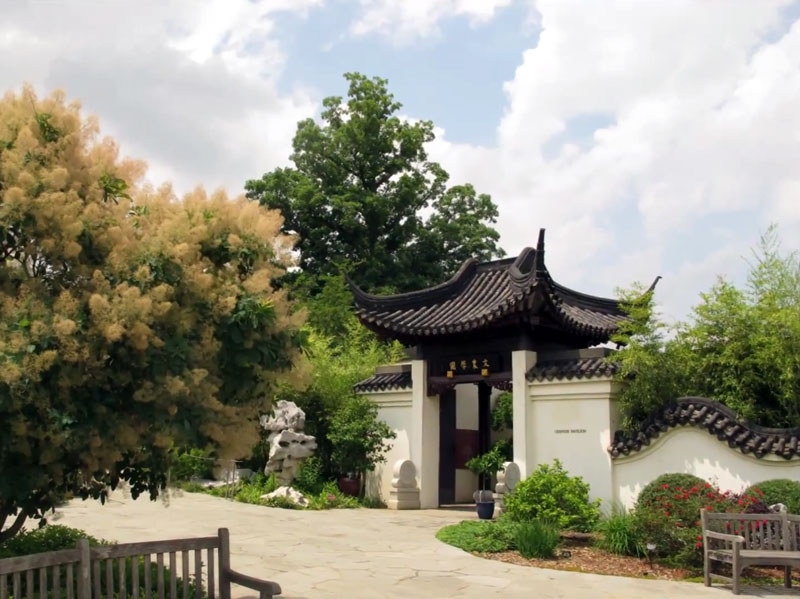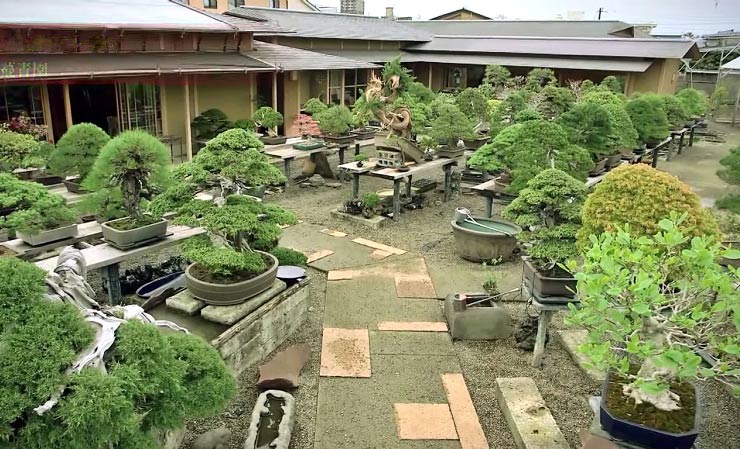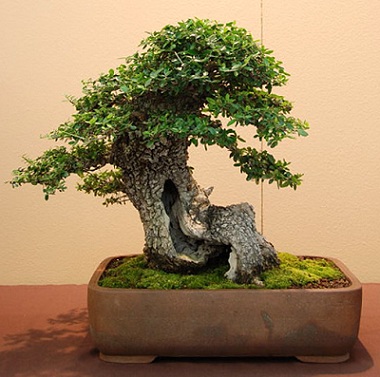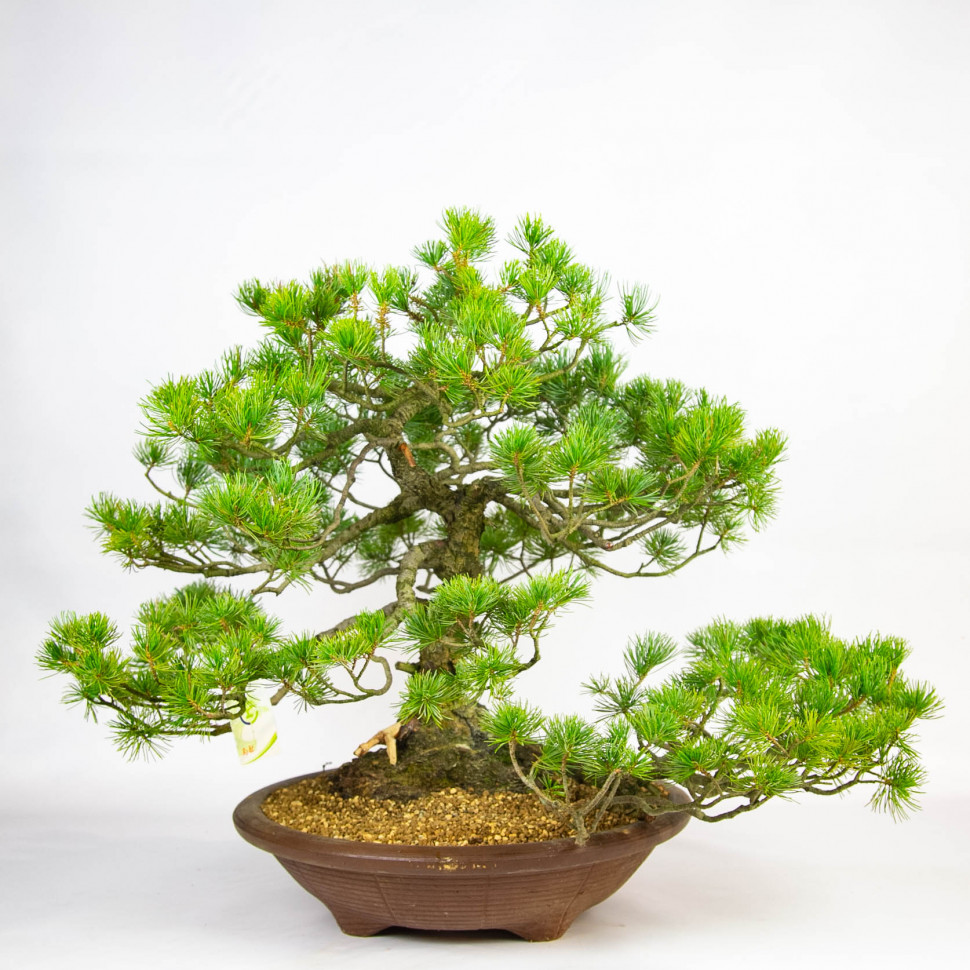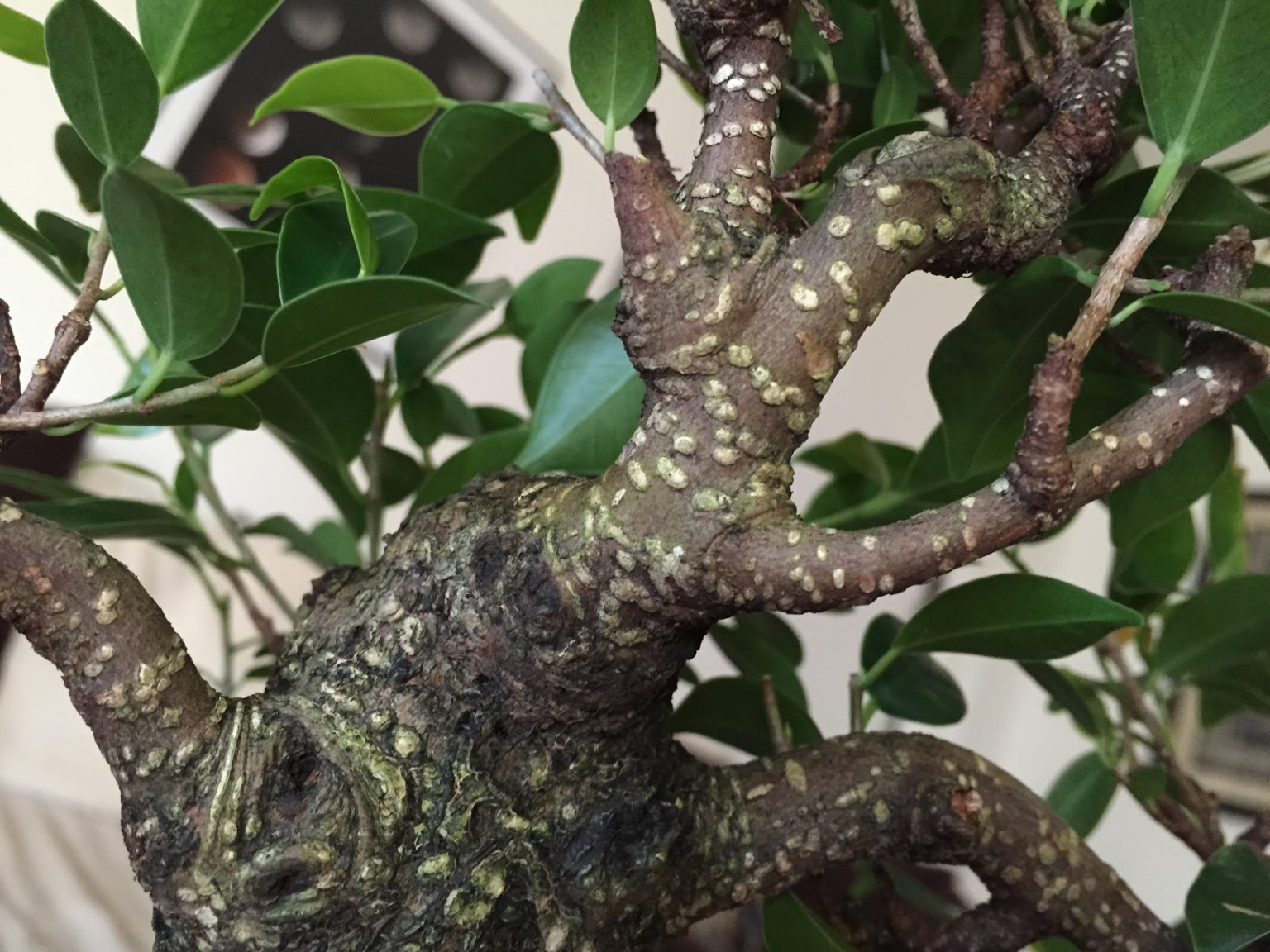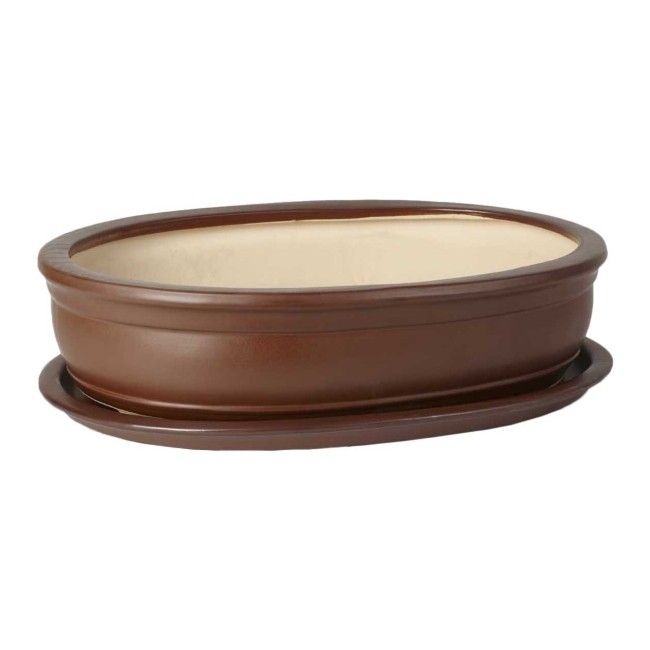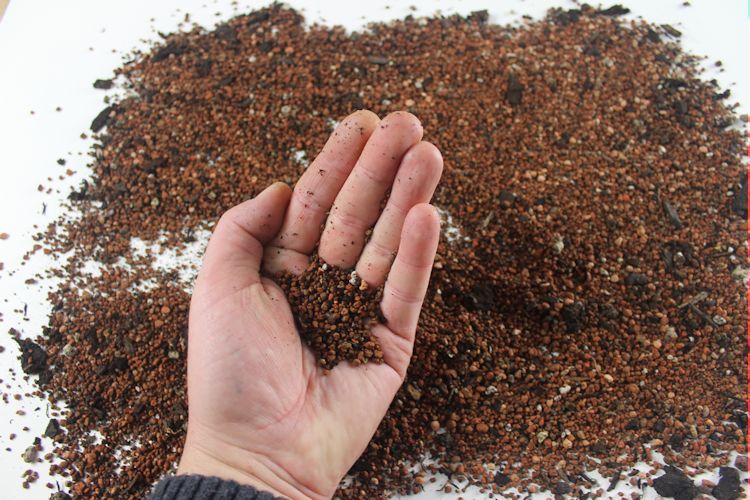Despite the fact thatgrowing bonsaipeople living in different parts of our planet are fascinated by it, it is still obviousAsian origin. It is not surprising that the best specimens are in the collections of JapanesemastersBelow you can see ten bonsai that are unique and striking in their beauty, balance and naturalness. They will make you fall in love with the art of Bonsai even more.
The rating below is not official.
- 1. 800 year old Bonsai tree at the Shunkaen Museum, Kunio Kobayashi.
- 2. Goshin "protector of souls", John Naka.
- 3. Dwarf Bonsai; Shohin by Morten Albek.
- 4. Scots Pine (Pinus Silvestris), Stefano Frisoni.
- 5. Chinese style bonsai; landscape Penjing Yee-sun Wu.
- 6. Flowering Bonsai by Wolfgang Putz.
- 7. Brazilian rain tree (Samanea) Budi Sulistyo.
- 8. Exhibition of Mame Bonsai, Morten Albek.
- 9. Famous Bonsai; Japanese Maple (Acer Palmatum) by Walter Pall.
- 10. Bonsai by master Kimura.
1. 800 year old Bonsai tree at the Shunkaen Museum, Kunio Kobayashi.
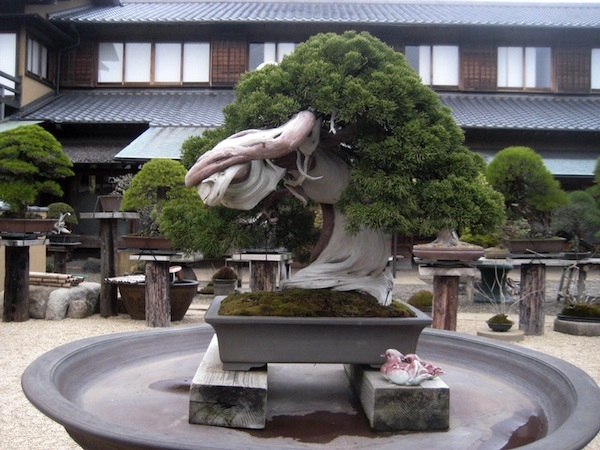
A remarkable tree that is known for its veryof great age; the tree is over 800 years old! Its owner, Master Kobayashi, is one of the most famous Bonsai masters in the world and has received the prestigious Prime Minister's Prize in Japan 4 times. His garden, ShunkaEn, is located in Tokyo and is open to visitors.
2. Goshin "protector of souls", John Naka.
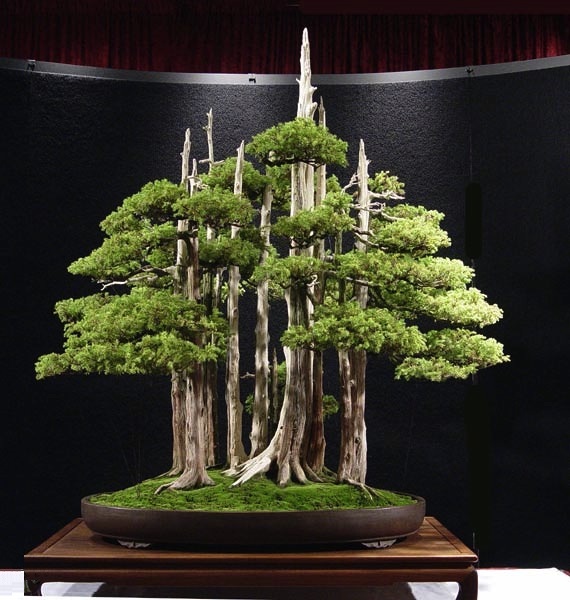
Bonsai Goshin (Soul Protector) createdby John I. Neka. This -forest plantingeleven Junipers (Foemina Junipers), the earliest of which Neka began shaping in 1948. He donated this specimen to the National Bonsai Foundation in 1984 to be put on display at the United States National Arboretum; Goshin remains there to this day.
3. Dwarf Bonsai; Shohin by Morten Albek.
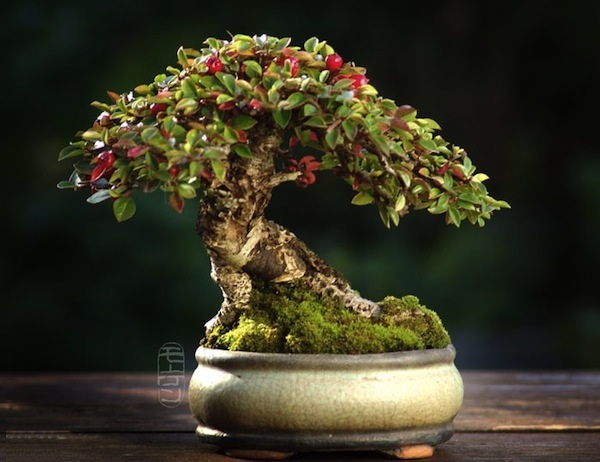
The magnificent Cotoneaster Horisontalis. This photo was taken in spring; the tree flowers in summer and produces small red berries in winter. The Bonsai is only 9.5 cm (4 in) tall andplanted on a miniature rock. The pot was made by John Pitt, a famous potter. The photo shows a tree about 20 years old, which was formed over the course of ten years.
4. Scots Pine (Pinus Silvestris), Stefano Frisoni.
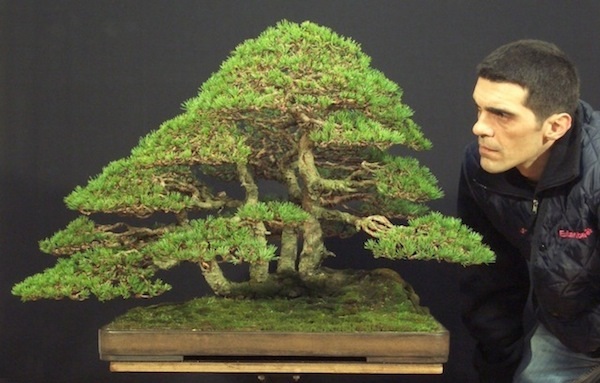
This tree is amazingly realistic, which is typical for perfectly formed Bonsai. As you can see the foliage is very dense, like clouds in the sky.
5. Chinese style bonsai; landscape Penjing Yee-sun Wu.
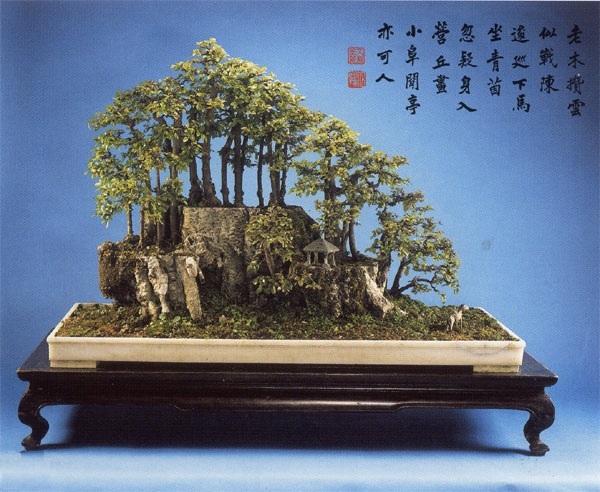
This wonderful Chinese landscape is part of the Meng Lung Collection in Hong Kong. A planting of Sageretia Theezans, which together form a very realistic landscape. Trees, rock and miniature figurines are placed in a low rectangular pot (made of marble), which in turn is placed on an antique table.
6. Flowering Bonsai by Wolfgang Putz.
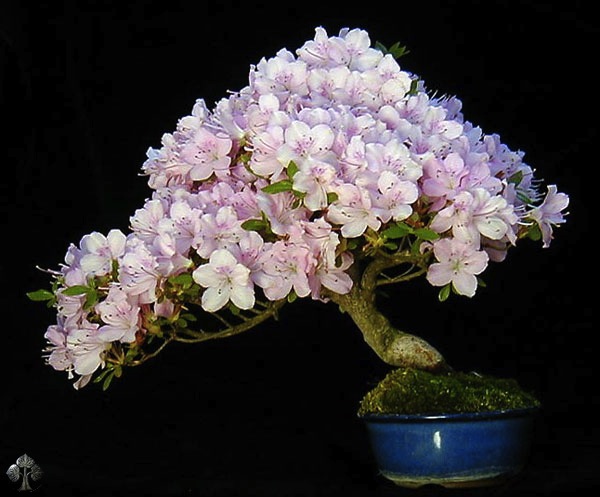
This tree is a variety of Azalea, only 14 cm tall. The photo was taken in early spring, when Azalea trees are blooming (briefly, but very effectively!). The bonsai is planted in a Japanese pot.
7. Brazilian rain tree (Samanea) Budi Sulistyo.
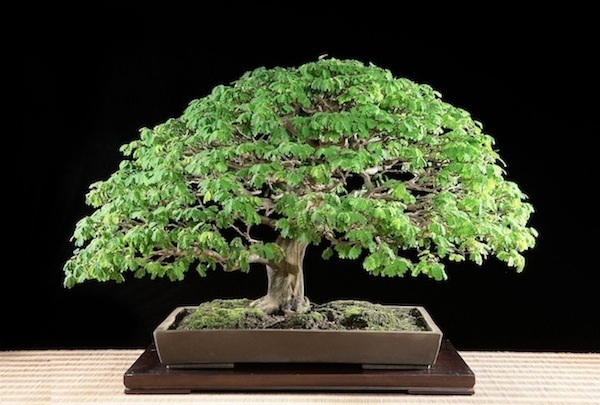
This tree was grownby cuttings12 years, you can see the result in the image above. The Brazilian Rain Tree grows in Central and South America, it is considered one of the most beautiful tropical trees in the world and one of the most popular materials for growing Bonsai.
8. Exhibition of Mame Bonsai, Morten Albek.
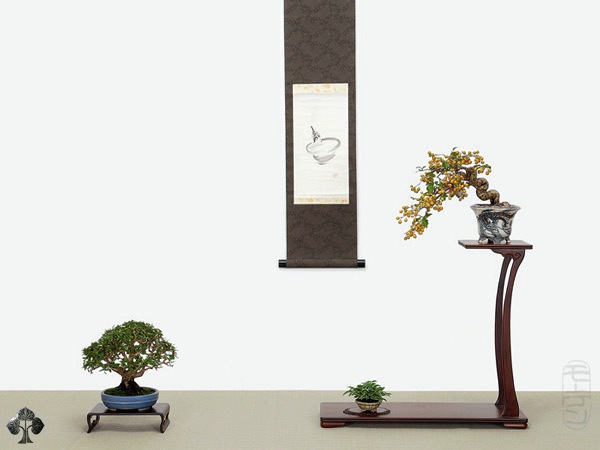
A Bonsai composition (in this case, a Mame display) usually consists of a central tree, a scroll, and supporting plants that enhance the beauty. All of these objects, taken together, create a powerful visual effect.
9. Famous Bonsai; Japanese Maple (Acer Palmatum) by Walter Pall.
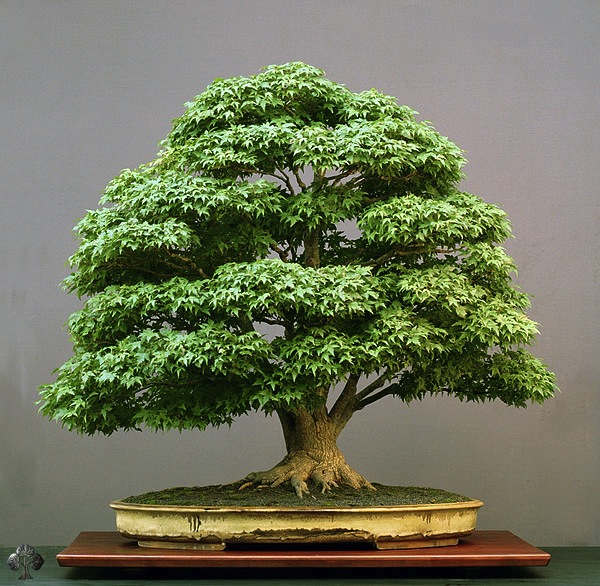
One of the most famous Bonsai trees, which belongs to the collection of the European Bonsai master Walter Pall, this tree is incredibly beautiful and realistic. The Maple is quite large (almost one meter high, which is practically the maximum for Bonsai), and old (more than a hundred years). Without a doubt, this Maple is a masterpiece, inspiring many Bonsai lovers!
10. Bonsai by master Kimura.
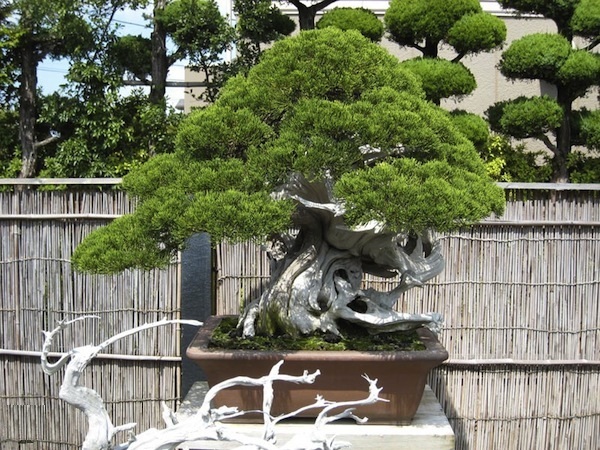
Last but not least, the beautiful Bonsai of Masahiko Kimura sensei. His diverse collection of Bonsai is world famous. Having become interested in this art at the age of 15, Kimura was a student of Master Amano in the “Bonsai Village” of Omiya.

